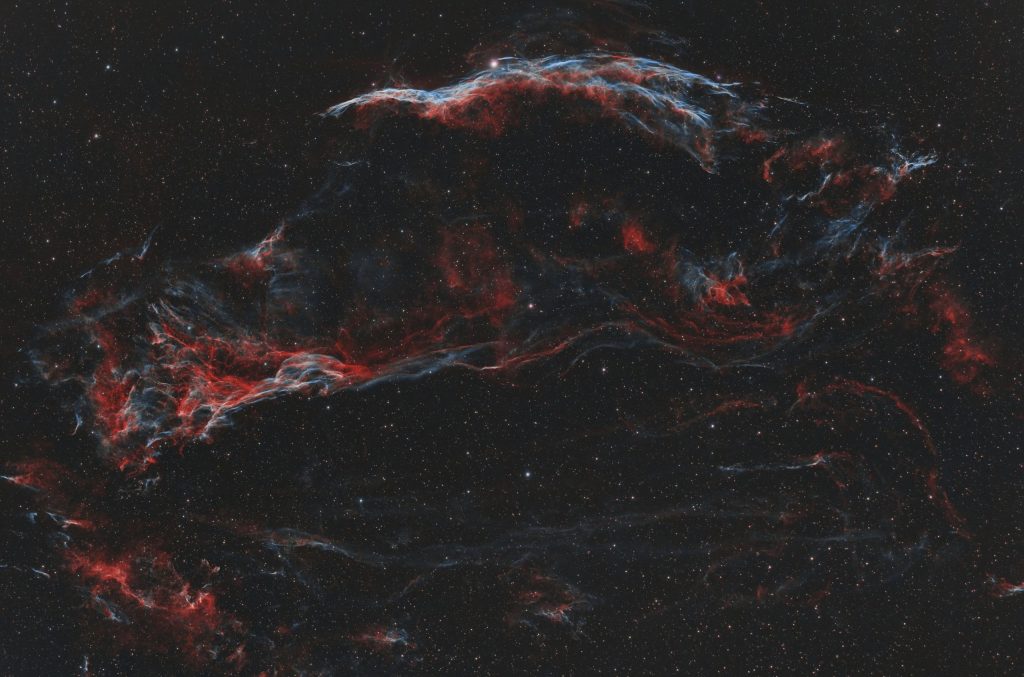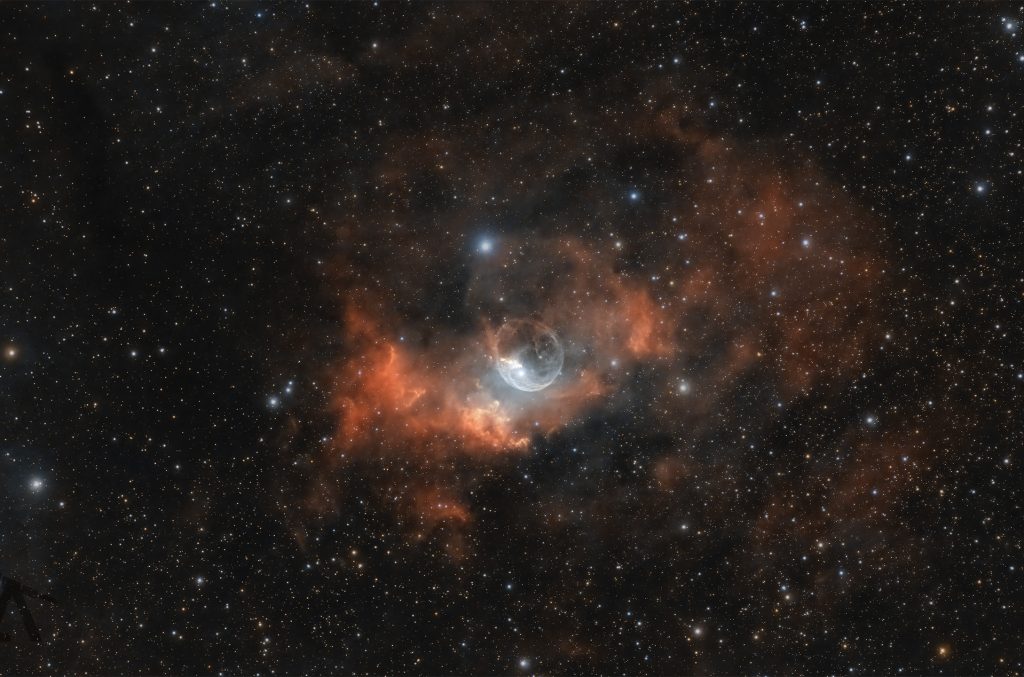
Cirrusnebel
Eines der lohnendsten und größten Objekte des Nachthimmels ist zweifelsohne der Cirrusnebel. Er befindet sich im charakteristischen Sternbild Schwan, im Sommer hoch im Zenit zu finden.
Er ist der Rest einer gewaltigen Sternexplosion, welche vor ungefähr 8.000 Jahren geschah. Als das Licht diese Supernova nach ca. 2.400 Jahren der Reise zur Erde kam, muss dieses helle Licht bei Nacht – und vermutlich sogar am Tage – bei unseren Vorfahren um ca. 5.600 v.Chr. für Staunen und Angst gesorgt haben.
Heute sind die Überreste der Supernova ein sehr bekanntes und beliebtes Ziel für visuelle und fotografische Beobachtungen. Diese gelingen teilweise schon mit einem guten Fernglas bzw. einem lichtstarken Teleskop. Bekannteste Teile des Cirrusnebels sind der Hexenbesen (NGC 6992) sowie der Sturmvogel (NGC 6960, oben im Bild).
click into the picture for the full size version.
Photo Details
| Object: | Cirrusnebel | |
| Constellation: | Swan (Cygnus) | |
| Distance: | 2.400 Lichtjahre | |
| Optics: | Askar FRA500, 500mm, f/5,6 | |
| Mount: | Skywatcher EQ8 on concrete pier | |
| Camera: | QHY268C Antlia ALP-T Dualband Filter |
|
| Exposures: | 73 x 300s, total 6h 5min | |
| Guiding: | WO Uniguide 50, ASI290mini | |
| Recorded in/on: | 2023-09-11 | |
| more info: | erste „Widefield“ Aufnahme |




